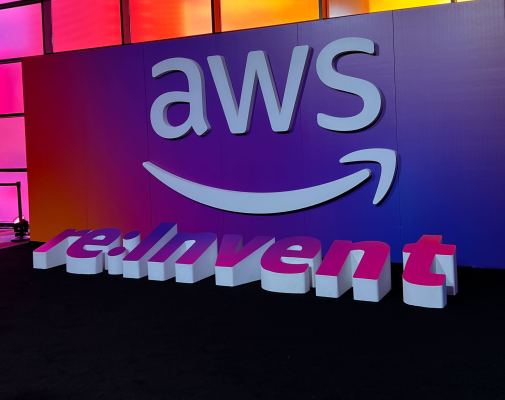It was kind of a strange AWS re:Invent this week in Las Vegas. Once again, there wasn’t a huge amount of news coming out of the massive customer event; the biggest announcements were related to AI, of course. But the real story could be that Amazon has found itself in the uncomfortable position of chasing Microsoft when it comes to AI.
And that’s in spite of the drama that played out at OpenAI last week, in which Microsoft was squarely in the middle.
The rivalry became clear when Amazon CEO Adam Selipsky took some not-so-subtle cheap shots at AWS’ cloud rival during the main keynote on Tuesday.
To be clear, being behind, if that’s what’s happening, is not necessarily fatal for Amazon. It has dominated the cloud since it invented the idea in 2006. And the generative AI landscape is still so nascent, and the market is shifting so quickly, that the perception among investors and some in the media, that Microsoft is ahead, could be moot in 12 or 18 months.
Like last year, the truly newsworthy announcements were thin with perhaps the most interesting being Amazon Q. It helps developers connect a generative AI layer to enterprise software and was being billed by some at the event as Amazon’s answer to Microsoft Copilot. And that could give credence to the idea that the cloud giant is, in fact, playing catch-up here.
Scott Raney, a partner at Redpoint, says that Microsoft made a couple of great moves, like buying GitHub for $7.5 billion in 2018 and investing at least $10 billion in OpenAI. That has put it in a good position to take advantage of the generative AI wave companies have been riding this year.
“This might be the first time where people looked and said that Amazon isn’t in the pole position to capitalize on this massive opportunity. What Microsoft’s done around Copilot and the fact Q comes out [this week] means that in reality, they’re absolutely 100% playing catch-up,” Raney said.
He doesn’t necessarily think that changes the dynamics of the cloud market in any significant way, where AWS has dominated for years. But it also doesn’t change the fact that Microsoft has put itself in a strong position to take advantage of new AI technology.
Of course, the whole relationship between Amazon and Microsoft is much more complex than it might appear on the surface. “First of all, the relationship between Microsoft and Amazon is more nuanced. It’s not enemies. It’s frenemies,” said Jon Turow, a partner at investment firm Madrona, who formerly spent almost a decade at AWS.
He points to Amazon’s $1 billion deal with Microsoft for Office 365 as proof that the relationship is more subtle than it appears, but that doesn’t mean the companies aren’t competing fiercely for enterprise hearts and minds.
The two companies seem to be taking different paths to AI, with Microsoft hitching its wagon firmly to OpenAI. This gives them a couple of advantages with enterprise customers. For starters, it has access to the internals of how OpenAI operates and is building that into Office 365, Bing and GitHub. Further, it’s running OpenAI on Azure servers, giving it an even deeper understanding of how OpenAI operates at scale. That’s something that is clearly getting CIOs’ attention.
Amazon has chosen a different approach with Bedrock, the company’s AI foundation engine, which is an API-based way to plug into a variety of large language models beyond OpenAI, while trying to capture the hearts of developers.
“The effectiveness, the resonance of Bedrock, is that it says that Amazon is going to have the broadest selection of world-class models,” Turow said. “And that’s not just a statement about the models that are there today, which everybody agrees are early days and nascent. But rather it’s a marker about where the market is going.” He thinks that this sends a strong signal to CEOs and CIOs that model flexibility is the way to go.
Choosing a vendor often depends on many factors, including with whom the company already works. “I think a lot of it is a conversation from a CIO perspective about what’s the current relationship with those cloud providers because [chances are] you’re going to be in a hybrid, multi-cloud environment with some on prem, some in the cloud, with different cloud providers,” said Jim Rowan, strategy and analytics portfolio leader at Deloitte. His company helps enterprise customers evaluate and implement their generative AI projects.
“And so what’s your strategy roadmap? How are you gathering that?” he asked. To Rowan, it’s really about focusing on traditional consulting problems, ones that clients have to plan carefully because they will continue to have to manage these projects over time, whether it’s AI or cloud.
It’s still very early, and as enterprise buyers continue to look at generative AI, they are going to explore a variety of options, trying to maintain flexibility and avoid vendor lock-in, just as they have done in the cloud. Yet the lure of this technology is so strong that companies are hoping to get an edge of their own.
Microsoft seems to have won the perception battle, at least for now. But as Amazon builds out its portfolio of generative AI technologies, that gap could close quickly. For the time being, it looks like Amazon has to play from behind, and it will be a big test for the company in terms of how it reacts to that pressure in the months ahead.

